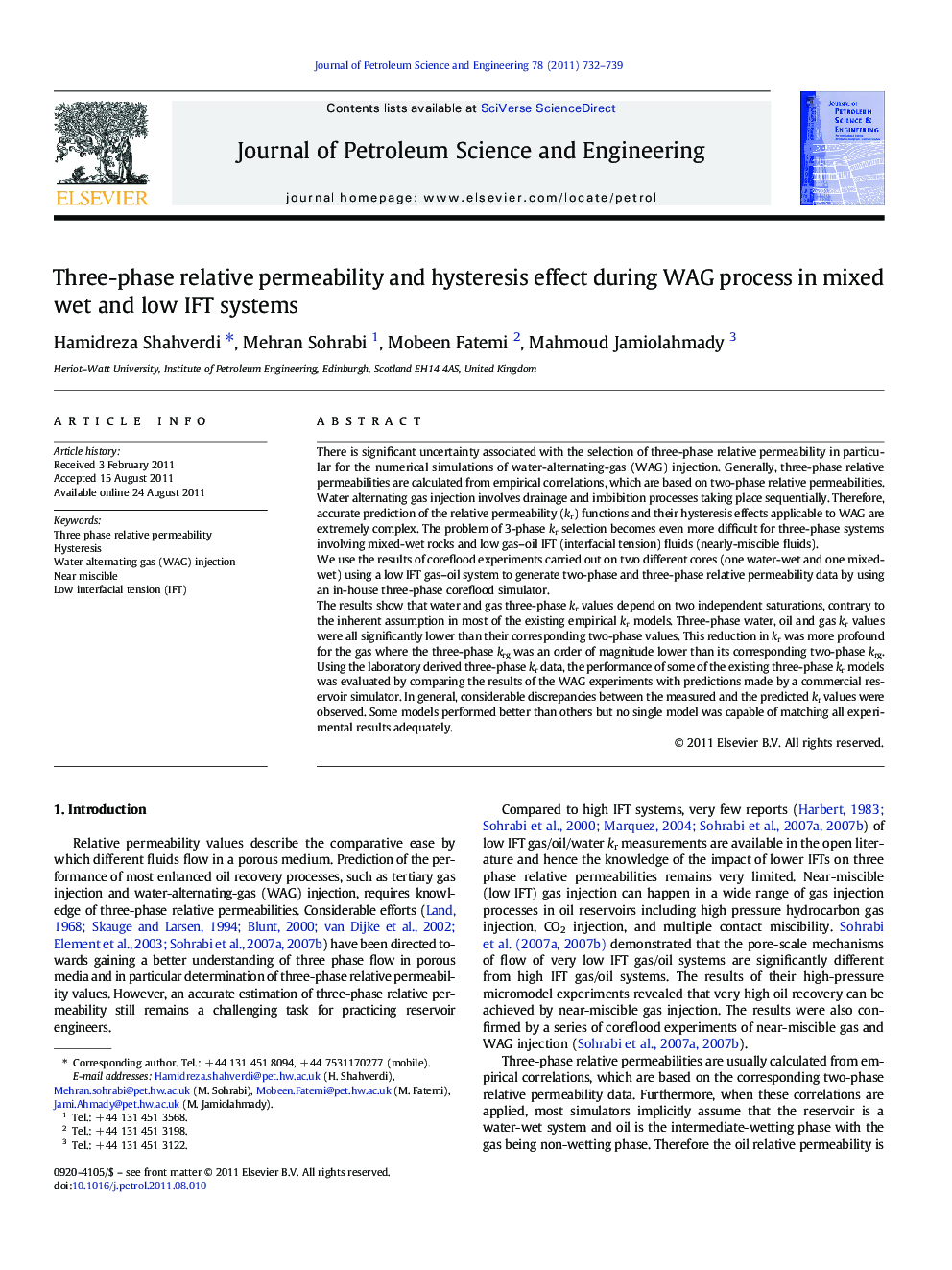| کد مقاله | کد نشریه | سال انتشار | مقاله انگلیسی | نسخه تمام متن |
|---|---|---|---|---|
| 1755680 | 1522855 | 2011 | 8 صفحه PDF | دانلود رایگان |

There is significant uncertainty associated with the selection of three-phase relative permeability in particular for the numerical simulations of water-alternating-gas (WAG) injection. Generally, three-phase relative permeabilities are calculated from empirical correlations, which are based on two-phase relative permeabilities. Water alternating gas injection involves drainage and imbibition processes taking place sequentially. Therefore, accurate prediction of the relative permeability (kr) functions and their hysteresis effects applicable to WAG are extremely complex. The problem of 3-phase kr selection becomes even more difficult for three-phase systems involving mixed-wet rocks and low gas–oil IFT (interfacial tension) fluids (nearly-miscible fluids).We use the results of coreflood experiments carried out on two different cores (one water-wet and one mixed-wet) using a low IFT gas–oil system to generate two-phase and three-phase relative permeability data by using an in-house three-phase coreflood simulator.The results show that water and gas three-phase kr values depend on two independent saturations, contrary to the inherent assumption in most of the existing empirical kr models. Three-phase water, oil and gas kr values were all significantly lower than their corresponding two-phase values. This reduction in kr was more profound for the gas where the three-phase krg was an order of magnitude lower than its corresponding two-phase krg. Using the laboratory derived three-phase kr data, the performance of some of the existing three-phase kr models was evaluated by comparing the results of the WAG experiments with predictions made by a commercial reservoir simulator. In general, considerable discrepancies between the measured and the predicted kr values were observed. Some models performed better than others but no single model was capable of matching all experimental results adequately.
Journal: Journal of Petroleum Science and Engineering - Volume 78, Issues 3–4, September 2011, Pages 732–739